The spread of bedbugs in France has caused some concern for locals and tourists alike. So if bed bugs are on your mind at night, you might want to know how to identify these little creatures, prevent their appearance, and above all how to get rid of them should they creep into your life! If you're a fan of home exchange, or if you are about to take the plunge, discover HomeExchange's advice and policy on this subject here.
The Resurgence of Bedbugs: Focus On France and Paris in Particular
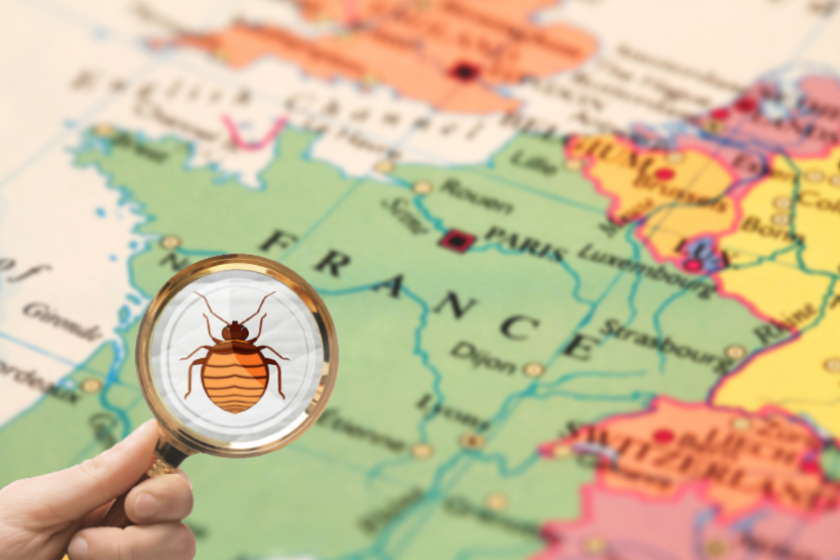
Recently, bedbugs in the French capital have become a hot topic. By the 1950s, bedbugs had all but completely disappeared here. However, since the 1990s, there has been an increase in bedbug infestations nationwide, especially in Paris, Marseille, Nice, Lyon and Toulouse. So is the case with many big cities across the world as they become more dense and populated, as it was with New York City and the bedbug epidemic approximately a decade ago.
But the resurgence is attributed primarily to international travel: travelers, unknowingly may unwittingly carry bedbugs in their luggage, contributing to the contamination of hotel rooms, vacation rentals, trains, cruise ships, buses and even planes. The resurgence of bedbugs is also due to the emergence of strains that have become resistant to insecticides overtime. With the upcoming Paris Olympics, bedbugs in the city have become a topic of discussion and brought the issue back to the attention of those far beyond France.
The Characteristics of Bedbugs
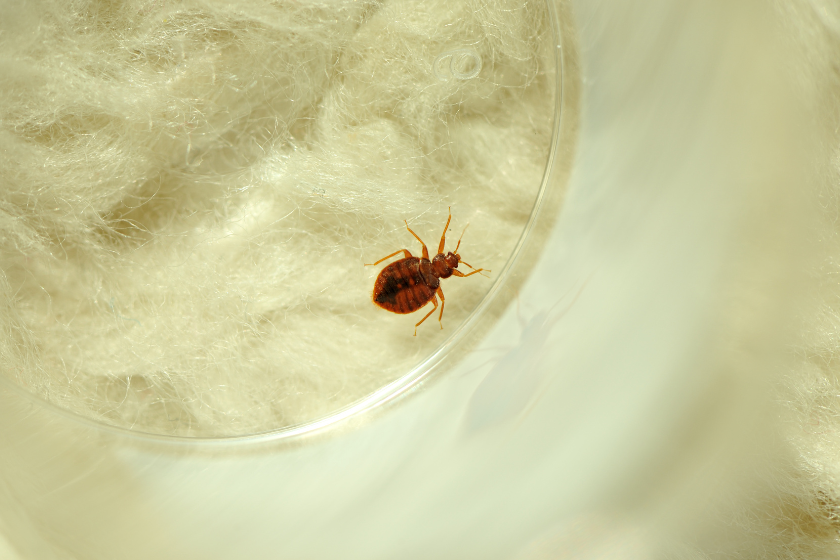
What do they look like?
Bed bugs are fairly easy to identify with the naked eye: they are wingless, flat oval in shape, brown in color, and the size of an apple seed. This parasitic insect is nocturnal and does not enjoy the light: bedbugs are therefore very active at night. As these insects cannot fly, they only move by walking a very short distance, and so are often transported from one place to another by catching a ride on objects where they like to live ( bedding, suitcase, bag, clothing, etc.).
What do bedbugs eat?
Bed bugs are like little vampires...they're blood-sucking parasites, meaning they feed exclusively on human blood. They can sting up to 90 times in one night! But they also have the capacity to survive for many months without feeding, which is why they are often so hard to get rid of.
Where do bedbugs live?
Bed bugs are often hidden in bedding and bite sleepers to feed on their blood. Therefore, they live mainly in bedrooms (mattress, bed frames, sheets). They also live in other dark, quiet places (sofas, cracks in walls and floors, behind pictures, curtains), where they can hide during the day since they don't like the light.
How do bedbugs reproduce?
Their development is extremely rapid and it is therefore important to intervene as quickly as possible in the event of an appearance, in order to avoid the extent of the infestation as much as possible. A female lays 200 to 500 eggs in her lifetime, which hatch approximately 10 to 14 days after laying, so the sooner they are dealt with the better, as you can imagine from the math.
How to Recognize Bedbugs
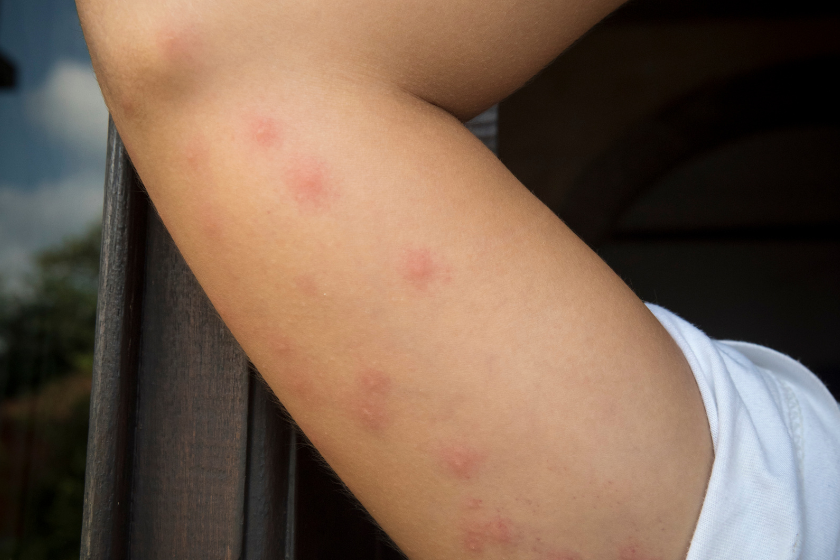
Red marks on the skin
Bedbug bites appear as red skin lesions that measure 5 mm to 2 cm. These bites are usually located on parts of the body exposed during the night, such as the arms, legs and back. Early in the infestation, bites may be grouped in small clusters, but if the person continues to reside in an infested environment, bites may appear all over the skin. These “wheals” cause itching, called pruritus, which is sometimes unbearable, leading to intensive scratching or even allergic reactions (urticaria).
Small black spots on the sheets
People often observe small black spots of 1 to 3 mm on the sheets, mattresses and box springs, corresponding to bed bug excrement. These traces give clues about the journeys that bedbugs take after their bites. These excrements also have the ability to attract other bedbugs thanks to their pheromones. Yikes!
Traces of blood
There are often streaks of blood on the sheets from bites while the person is sleeping at night. These trails are due to the crushing of the bedbugs by the person who was bitten.
Bedbugs sightings, dead or alive
With the naked eye, you can fairly easily identify live or dead bed bugs. But it is more difficult to see nests, because they can easily be confused with dust. These nests contain both eggs and molts (old bed bug skins that they shed as they become adults).
How To Get Rid of Bedbugs
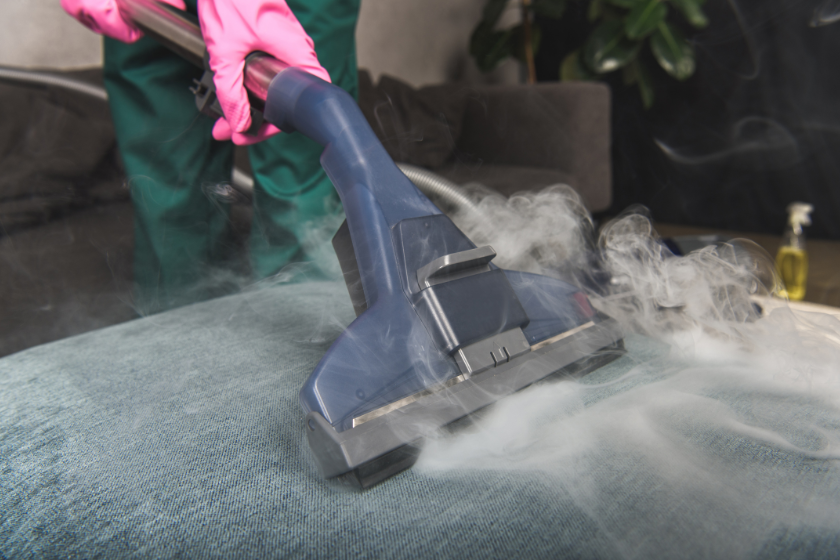
In the event of an infestation in a home, it is necessary to take immediate and strict measures to limit the proliferation of bedbugs and eliminate them as quickly as possible. For example, bed bugs do not like high temperatures or very low temperatures. Here are the essential steps to get rid of it:
- Machine wash bed linens and clothing above 60°C.
- Dry infested textiles in the dryer for at least 30 minutes.
- Steam clean mattresses and box springs, armchairs and sofas, as well as in every corner of the house at high temperatures (at least 120°C).
- Freeze all laundry that cannot be washed at 60°C (2 to 4 days, at a temperature between -18° and -40°C).
- Carefully vacuum up insects and eggs and dispose of the vacuum cleaner bags in an outdoor trash can.
- Thoroughly clean all instruments and utensils used to get rid of the bedbugs.
- Dispose of furniture that has been heavily infested in a recycling center, and be sure to signal the bed bugs infestation so others don't take these objects unknowingly.
Bedbugs & Travel: Advice to Avoid Taking Them Home With You or Bringing On Your Travels
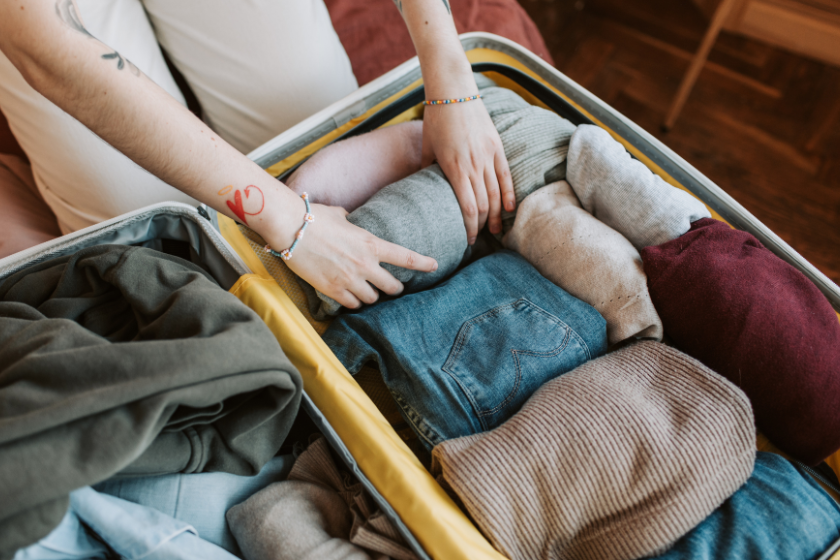
Make sure there are no bed bugs where you're staying
- Place your luggage tightly closed on a piece of furniture or a luggage rack, do not leave it on the floor or under the bed.
- Examine cabinets and closets before storing your clothes.
- Check the mattress and box spring as well as the furniture upon arrival, especially those that are padded.
Make sure you don't bring back any unwanted guests back home from your trip
- Check your luggage for bedbugs.
- Do not place your luggage on your bed or sofa.
- Examine all your clothing and personal belongings.
- Wash your clothes (if possible at 60°), even if they have not been worn during your trip.
- Vacuum your bags and suitcases.
- Dispose of the vacuum cleaner bag immediately in a tightly closed trash bag.
Home Exchanges & Bed Bugs: What's HomeExchange's Policy?

Seasonal rentals result in a large number of visitors, which can increase the risk of bedbugs appearing. As the owners are not always on site to react in time, it is advisable to remain particularly vigilant.
Bedbugs and home exchanges
As we've pointed out, no one is safe from a bedbug infestation. But unlike seasonal rentals, the risk is much lower when it comes to house exchanges, for two essential reasons:
- The houses offered for exchange are mostly inhabited all year round. Their owners (the hosts) are therefore particularly vigilant, know their house well and take care of it. They can therefore be highly reactive if bedbugs come into their home!
- Home exchanging is a practice that does not see a high number of guests year round. It's occasoinal so the turn over of people who might be unknowingly bringing bed bugs into a home is limited, therefore decreasing the risk as compared to a hotel or full time vacation rental.
HomeExchange's Bed Bug Policy
- If you notice the presence of bedbugs when you arrive at your host's house, HomeExchange gets involved and relocates you.
- If you notice the presence of bedbugs in your home after an exchange: HomeExchange does not cover any costs related to treatment of the house.
In the extremely rare event that a HomeExchange member thinks they may have brought bedbugs into their home as a result of an exchange, or if a host thinks a guest may be linked to the appearance of bedbugs in one's residence, HomeExchange encourages communication and amicable resolution of these situations.
> Legislation on Tourist Rental Between Individuals
> Why HomeExchange is the Best Home Exchange Site of 2023
> HomeExchange Releases First Ever Multilingual Dog Phrasebook
> 1 year of B Corp cCertification: A Retrospective & Future Ambitions
> Cleanliness Capitals: The Top 10 Cleanest Cities in the World
